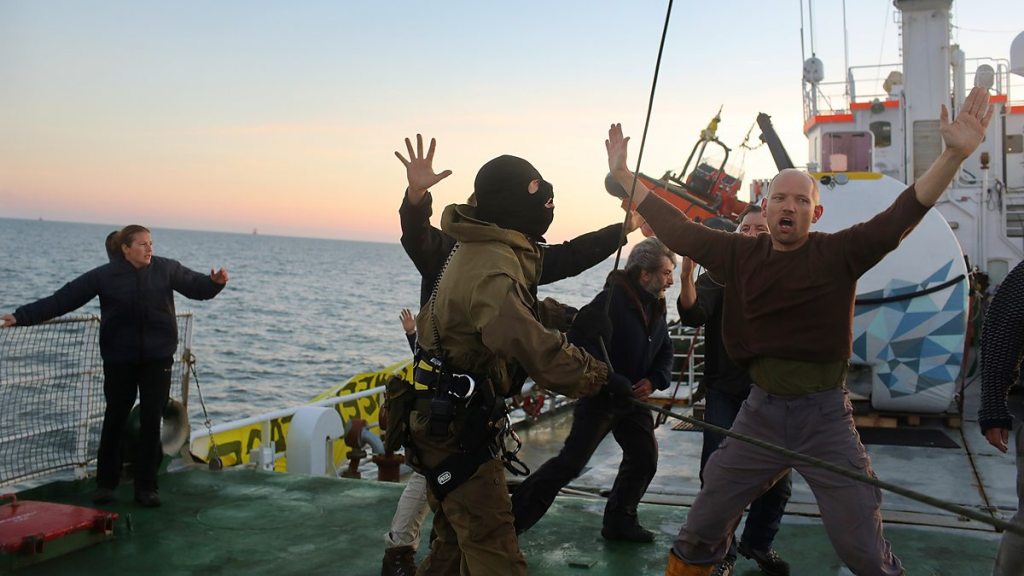For the final film club of 2024, I screened the first two episodes of the popular and widely discussed (in TV circles) “On Thin Ice: Putin V Greenpeace“. This recent BBC documentary series, in the words of BBC iPlayer, captures “a daring protest on a Russian oil rig goes terrifyingly wrong. The activists become unwitting pawns in Putin’s war against the West – and at the heart of a global crisis“. After attending Wildscreen and reading a lot about the excitement surrounding the documentary series in recent media, it was an obvious choice for the film club.
In the recent COP29, UK broadcasters released an updated pledge to increase the climate content on TV and to measure its impact. This goes beyond their previous pledge made at COP26, where they acknowledged broadcasters’ “crucial responsibility to help our audiences engage with these challenges” and set out to collectively to communicate climate and inspire audiences to act in their media outputs. But, communicating climate issues without unleashing fear and despair through “doom and gloom” stories is hard. To combat this, genre-mixing is an increasingly popular method used in media to communicate and make entertaining climate. An issue that at the end of the day is complex and anxiety-inducing. Genre-mixing in practice, mostly means mixing different genres with drama formats. This makes stories entertaining by using techniques that are known to attract audiences and increase bingeability. As being “bingeable” means it works on streaming platforms.
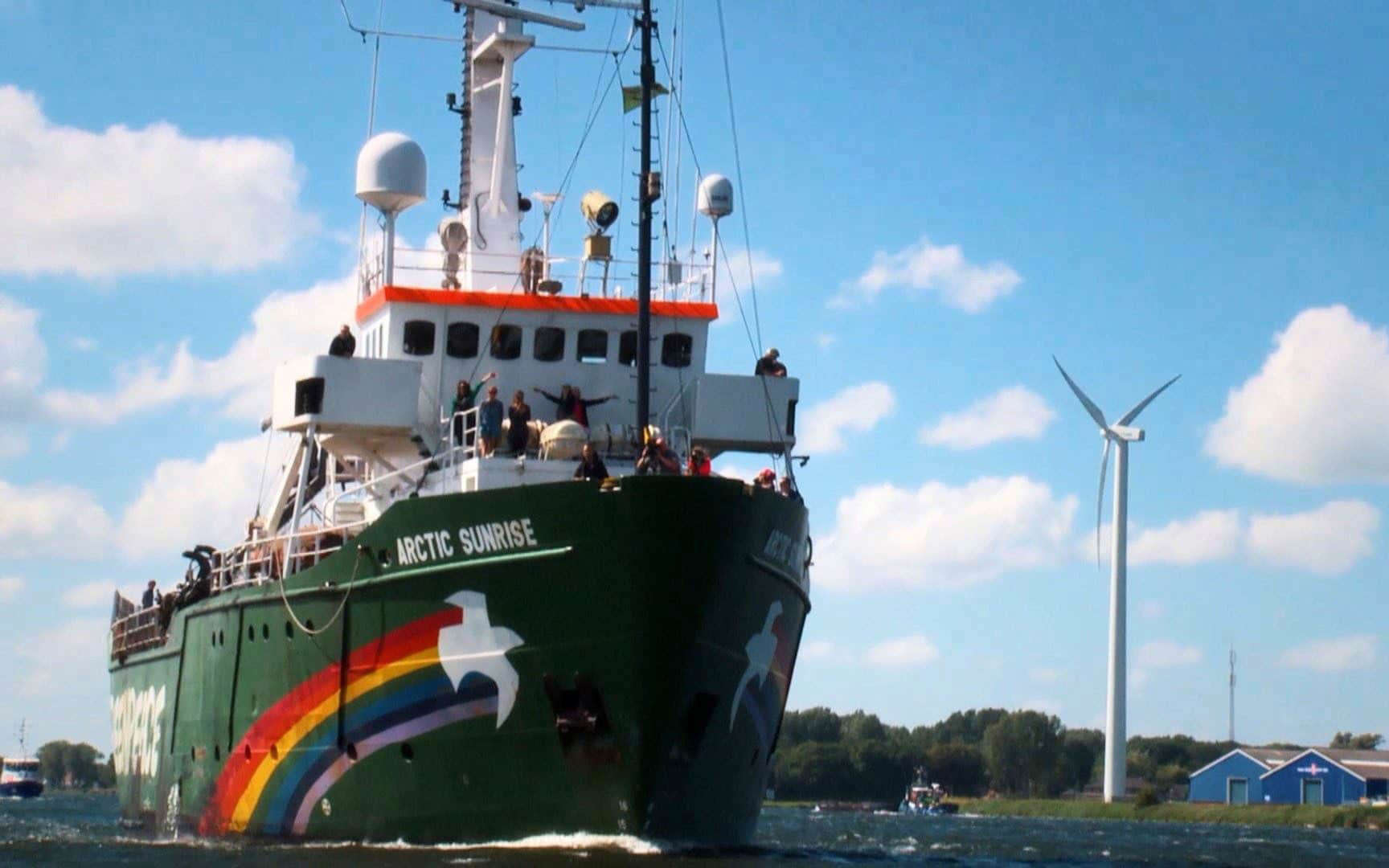
So I was keen to show this series as I wanted to hear the audiences thoughts and reactions to:
- The new climate-drama format
- The representation of Greenpeace as a well known activist organisation
- The climate crises messaging
And I wanted to watch the series myself!
I try to be careful to step back from the discussions to see what opinions and debates are risen. This is something I am still learning and it meant that not all of my personal thoughts were discussed. But, as always, I was fascinated in the audiences reactions and really humbled by what I learnt from everyone else. So here are some of my key learnings from the film club audience.
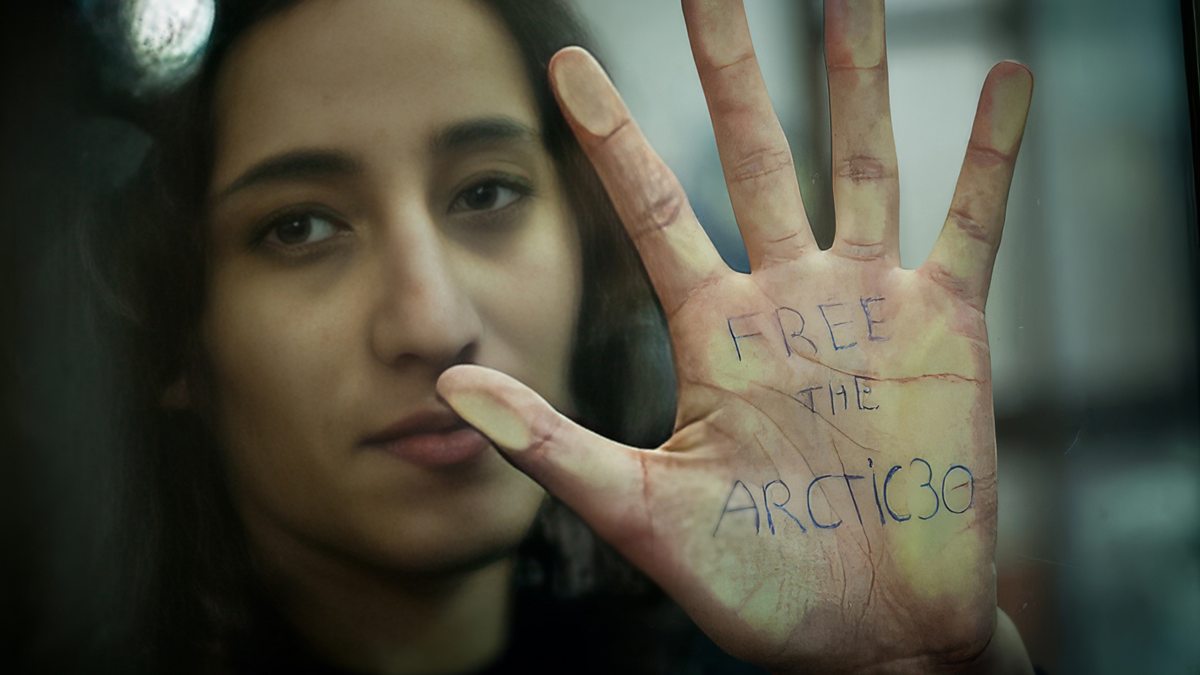
Audience feedback
Here are a few themes from the post screening discussion that often came up:
- Media responsibility – filmmakers and communicators of science and news are accountable for the messages they include in their content. Audience members stated these messages should be truthful to reduce the risk of spreading misinformation which can have a harmful impact on audiences who may not critically engage with their content.
- Good vs Evil storytelling tool – typical to dramatic and suspenseful television, this narrative framework often plays off two characters or causes (in this case Putin and Greenpeace) against each other. This tool often frames someone as “hero” and the other as “villain“, therefore taking an ethical stance by marking one as “good” and the other as “bad”.
- Media persuasion and influence – [SPOILER] sort of. There was a very clear message in the episodes of the immense value of footage as ‘proof’. Media is a powerful platform for communicating true stories that may otherwise go untold. It is an important tool for informing societies of events that might otherwise not be believed. It gives people a voice.
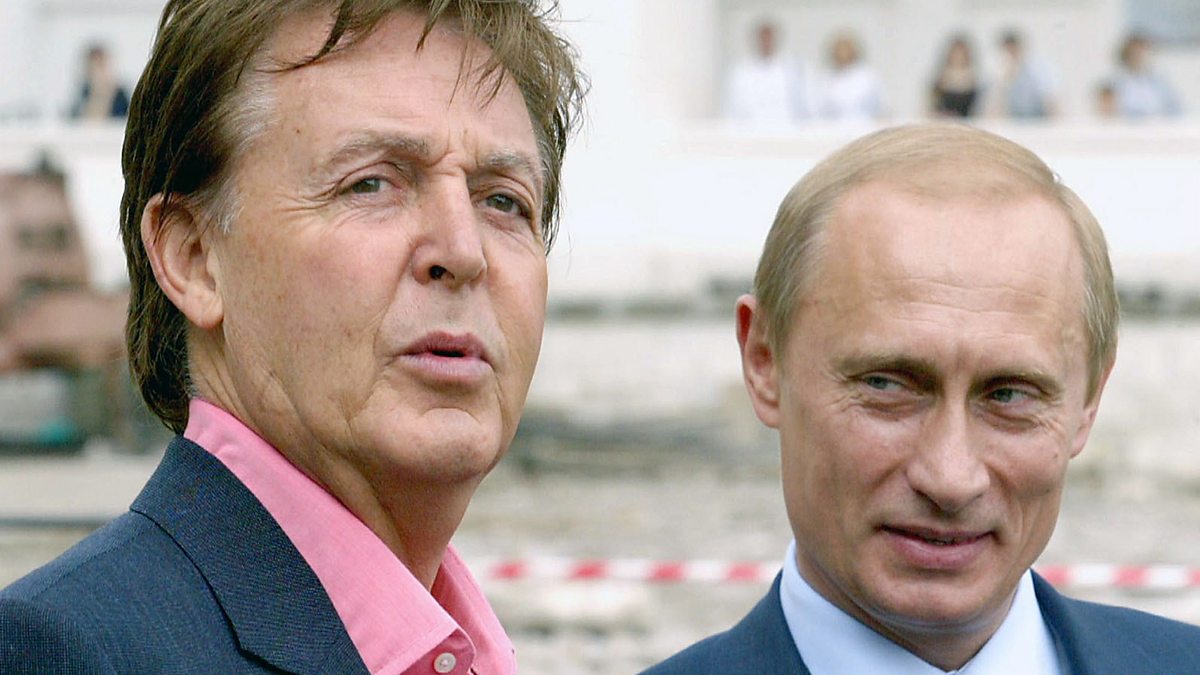
Good vs Evil
This is a dramatic and divisive storytelling tool. It creates tension through battles and often unites groups in the audience who root for the same character. Audience in the film club explained that in the case of “On Thin Ice”, the storytellers built on the current geopolitical stance on Russia and the everyday news coverage of the Ukrainian war. The series therefore utilises existing tensions to create an entertaining story.
However, as a storytelling tool, some audience members discussed how this technique creates two definite and binary sides. The divisive tool, depending on how it is used in dramatic storytelling, reflects and enhances existing divides and differences in society. It is divisive in how it can be used to alienate a proportion of the public, depending on which side of the split the audience relate with. Therefore, it risks contributing to existing polarisation between different communities.
Students who had studied science communication and had an understanding of behaviour change, emphasised the risk this creates when used in climate communication. To affect successful behaviour change, it is important to try and build bridges between groups in society. Not drive wedges. One audience member commented that the hard work of bring people together and encouraging communication across these divides is what is needed to bring about transformative change. And a change that is just and values different peoples’ perspectives and experiences.
This critique of the storytelling technique does not say it is “wrong” or “bad”. But that it must be used carefully and practiced with awareness of how it may impact audiences. It is a very effective tool in for dramatic storytelling, but is it the best if you want to leave a strong climate message that can lead to effective and positive social change?
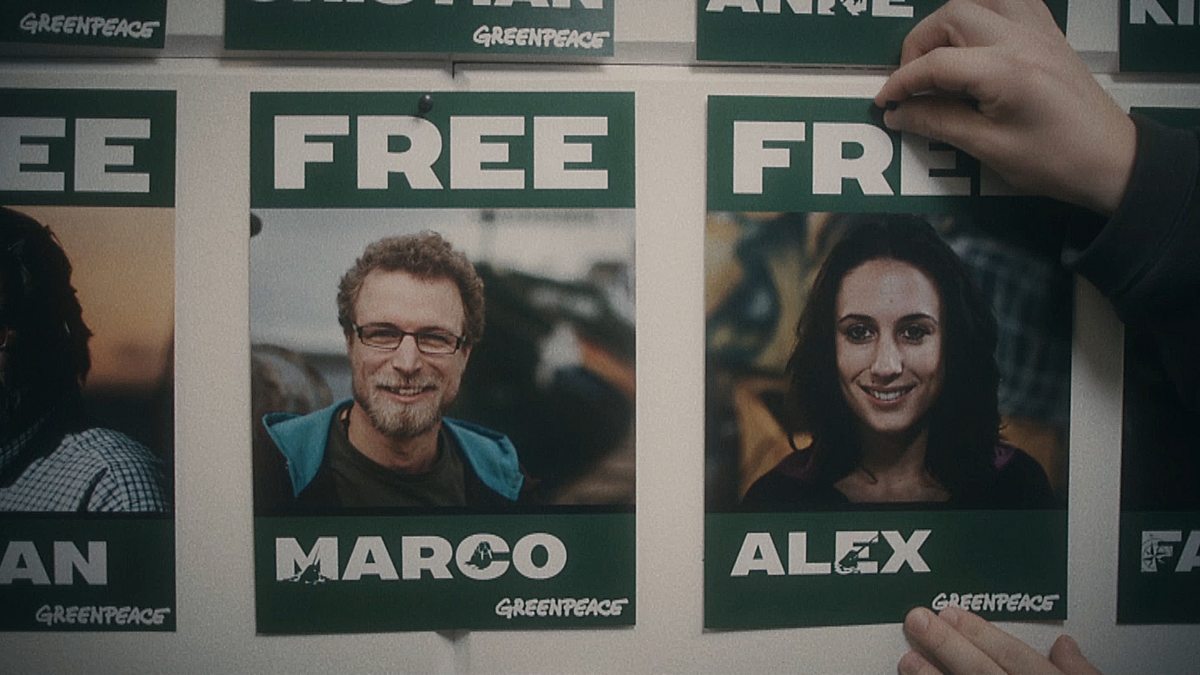
Media responsibility and influence
The “shock” tactic is one that we in the Western world are all aware of. Whether it is clever marketing techniques getting us to consume more products, media outlets and/or click bait, we are somewhat used to being shocked. But, footage of events around the world that we may not see without the platform of the media is very valuable. It is an effective way of amplifying voices and sharing necessary stories. In some cases this can be an important way of increasing awareness and can lead to meaningful action to attempt to prevent injustice.
The film club audience spoke to both the importance of sharing new and shocking content to reveal hidden truths, and to the fact that our media drenched society are highly desensitised. They commented that the stimulus required to shock us is now a lot higher than it may have been in 2013 when the story of the Arctic 30 broke out, that this documentary series is based on. The audience discussed how the highly oversaturated social media lives of today have developed a much higher level of tolerance and have much shorter attention spans. Therefore, the dramatic framing of the story may be what is needed to trigger a response.

Despite our desensitised society, the audience pointed out “without the footage, nobody cares”. Footage makes a story believable and often emotionally relatable. But how the story is framed, how the footage is edited, can effect the framing of it’s “truth” and the message the audience take away. This linked back into the theme of “responsibility” as the communicators/filmmakers have the power to influence what the audience believe. The accuracy of the storytelling and the reliability and trust in the platform communicating it, affect the believability of the content. Therefore, the audience felt very passionate about the responsibility thus the accountability of the media. Particularly because of the very real and current threat of misinformation.
The recent trend to make content more entertaining through dramatic telling, to encourage bingeability so to gain viewers, was debated in the discussion. This technique both can be culturally impactful as it appeals to an audience that may not hear or choose to watch that content otherwise. So it expands the audience diversity. But, by making the stories more entertaining it encourages a sense of “perceived learning” where audiences believe they are learning more than they actually are. It also builds awareness, but not critical engagement.
Some film club members explained that a responsible media platform should offer truth and let the audience develop their own perspectives so they can engage in the content however they feel they have capacity to within their lives. This way you encourage a diversity of perspectives and empower audiences in making their own informed choices. But others questioned whether this limits audience reach as you may only be preaching to a choir of already converted who would already choose to watch the media content.
Those from a behaviour change background questioned, if the purpose of this content is to increase awareness of an audience, what happens next? What makes audiences want to act on that awareness and engage with what they have learnt in practical ways? This feels like a particularly important question for a documentary series about activists engaging in direct action to practically act on the urgent climate crises. The film club audience questioned, what is the impact of entertainment and encouraging audience awareness? So I question, what is the impact the filmmakers and broadcasters wanted the series to have?
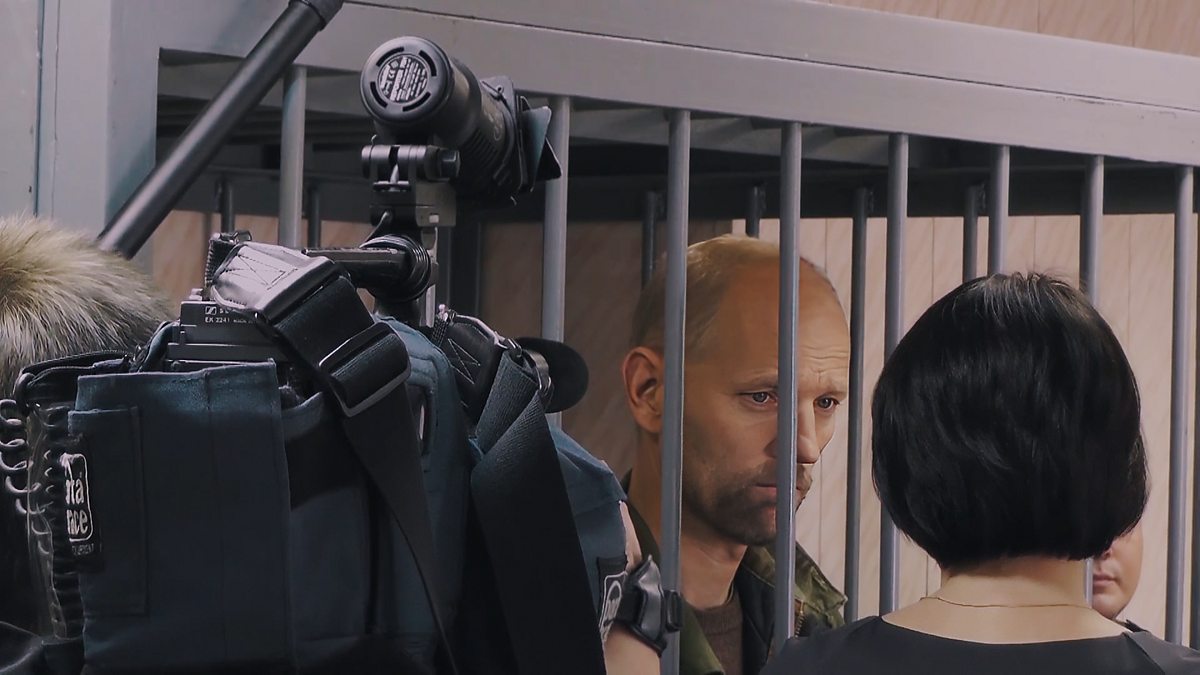
My response
I want to clarify, this is not all of the themes that came out of the discussion. There were many. But it felt like these were important ones (from my perspective) to share. The film club audience may feel otherwise. Some of the others included climate action and activism and the role of the individual and governments in change. Also, the conversation could have easily gone on for a lot longer. If it had we may have reached different conclusions.
But, my overall response, is just massive appreciation for the people who come to these screenings. Who share their valuable perspectives. And who seem to enjoy it too. I love holding this club and I learn so much. So, I end 2024 by saying thanks to everyone who helps and comes along. And, I will end 2024 by finishing the rest of the episodes of this series too!
